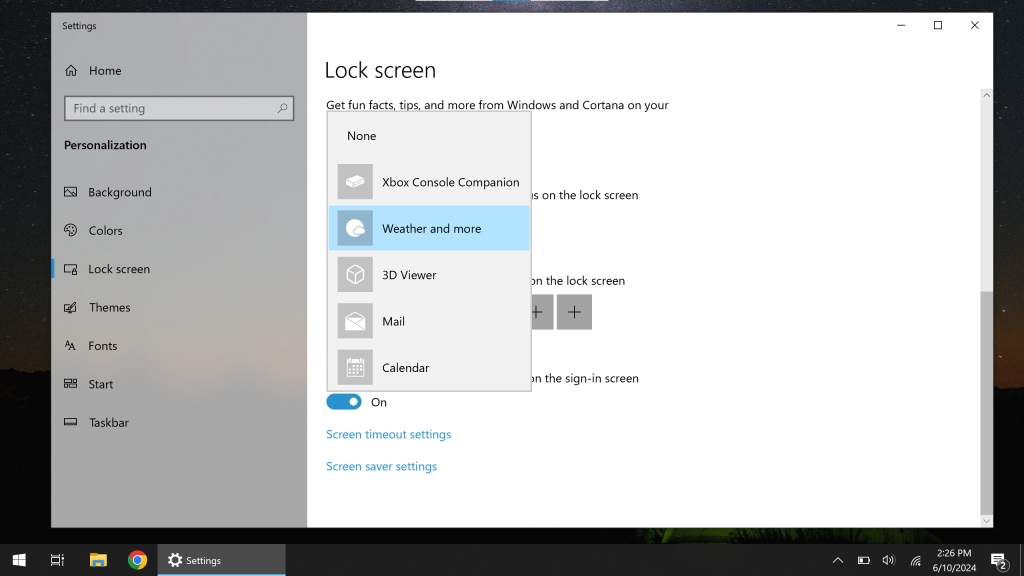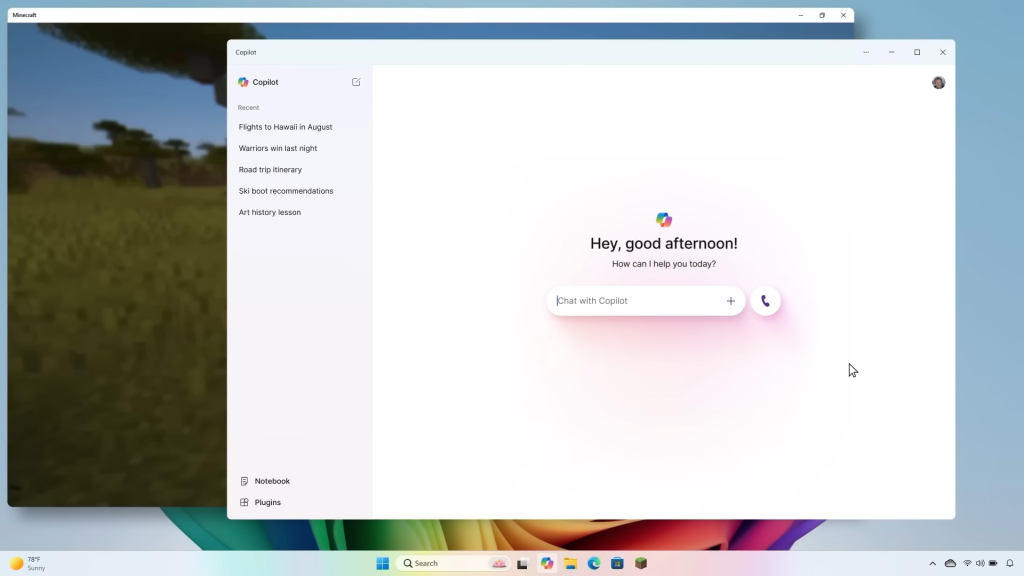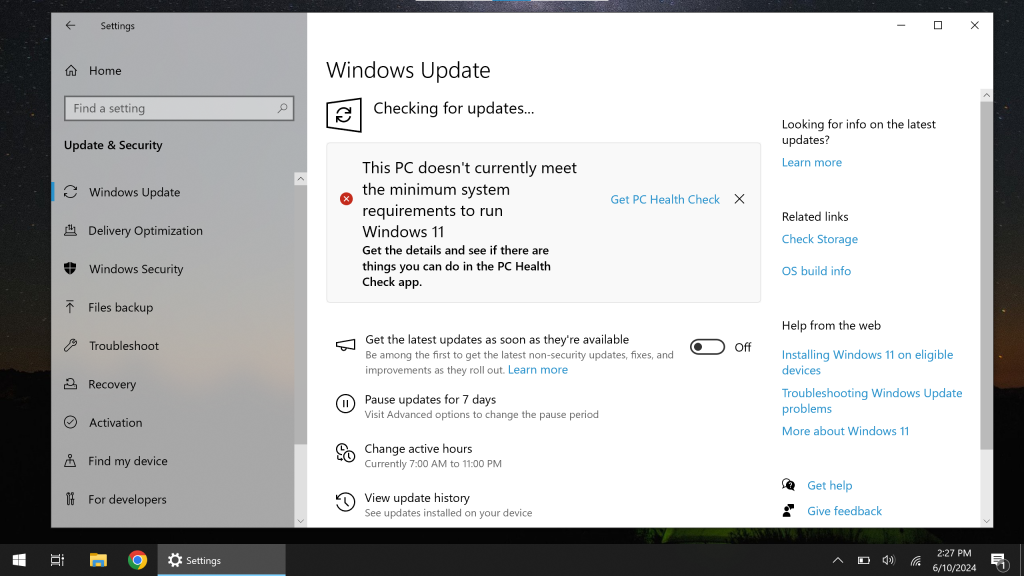Microsoft is ramping up development on Windows 10 - while preparing to kill it right on schedule next year.

Microsoft's approach to Windows 10 has been chaotic lately. The company looks like it's ramping up development of new Windows 10 features this summer - all while insisting it will end support for the OS in October 2025.
Whether you're a business user or a consumer, it's natural to wonder what exactly Microsoft is doing, why it's happening, and what it all means for Windows 10's support timeline.
I've got some answers to why Windows 10 looks like it's getting another burst of life - and why it will be short-lived.
Want tips for making the most of your PC?Sign up for myfree Windows Intelligence newsletter- I'll send you three things to try every Friday. Plus, get free copies of Paul Thurrott's Windows 11 and Windows 10 Field Guides (a$10 value) for signing up.
It all started with Copilot
When Microsoft announced Copilot back in September, the message was clear: Copilot on the taskbar was aWindows 11feature for modern Windows 11 PCs. Why would Microsoft add its generative AI software to Windows 10 PCs? After all, those PCs wouldn't last much longer.
In fact, the lack of updates was part of Windows 10's new advantage! For businesses and users who just want a stable version of Windows that didn't change much, Windows 10 was just the ticket. All the new features would be added to Windows 11, which made Windows 10 ideal - especially in business.
A few months later, Microsoft changed its mind and announced Copilot would be coming to Windows 10's taskbar, too. It was a shrewd business move, using Windows 10 as a platform to deliver Microsoft's web-based AI assistant to most Windows PCs in the world.
After all, Copilot-on-the-taskbar is entirely dependent on Microsoft's cloud servers. You can use Copilot just as well on a Windows 10 PC as you can on the Copilot website or a Copilot Android or iPhone app. As I put it months ago, Microsoft is using Windows PCs as a platform to push its web-based services.
At the time it changed tracks, Microsoft explained that it was 'maximizing value in Windows 10.' As the company put it: "We are revisiting our approach to Windows 10 and will be making additional investments to make sure everyone can get the maximum value from their Windows PC including Copilot in Windows."
(You could just as well say Microsoft was getting the maximum value from its Windows 10 users - delivering Copilot to as many people as possible.)
Windows 10 has gotten other recent updates
That Copilot taskbar icon is just the most obvious update to arrive on Windows 10 PCs recently. Microsoft recently launched an expanded lock screen weather widget that now also displays sports scores and stock price updates on the lock screen. (Here's how to hide that widget from your PC's lock screen.)
That particular update arrived for both Windows 11 and Windows 10 PCs around the same time. As with Copilot, it's all about using PCs as a platform to push Microsoft's web-based services, getting them in front of the maximum number of people and getting extra clicks to Microsoft Start.

Chris Hoffman, IDG
Microsoft is also rolling out an update that will offer "Spotlight" as a desktop background option on Windows 10, letting your PC download fresh new desktop backgrounds every day - another feature previously only found in Windows 11. That's good news, and it means Windows 10 users who want this sort of thing will be able to uninstall the Bing Wallpaper tool and select "Spotlight" under Settings > Personalization > Background - just like on Windows 11.
There have also been app updates \. Windows 10's Photos app has gotten a variety of AI-powered features, just like Windows 11's version. You can erase objects from photos with generative AI in your PC's Photos app - whether you're using Windows 10 or 11. And Windows 10 got a new "Windows Backup" app that encourages you to back up your data with OneDrive.
Now, the Windows 10 beta channel reopens
After all of this, you would think that Windows 10 feature development might be winding down. But Microsoft appears to be ramping up. On June 4, the company announced it was re-opening the beta channel for Windows Insiders who want to test new features on Windows 10. That seems like a sign that evenmoreWindows 10 features are on the way - and they need testing.
Just in case there was any confusion, Microsoft's reiterated that the October 14, 2025 end-of-support date hasn't been changed.
Clearly, Microsoft isn't done. Expect to see more new features and changes. For example, Microsoft is transforming the Copilot experience in Windows from a sidebar to a more traditional windowed app - something that looks very similar to the new ChatGPT desktop app that OpenAI recently showed off. That announcement was about Windows 11, but it's easy to imagine Copilot's modern new interface might come to Windows 10 as well.
I also imagine you can expect more new features and tweaks that tie in with Microsoft's online services.

Chris Hoffman, IDG
Microsoft keeps putting its Windows division under new management
You can't really understand what's going on here without turning your eye to the corporate machinations inside Microsoft. If it seems as if the company's Windows 10 strategy keeps shifting as the management in charge of Windows keeps changing. Microsoft has had three different people in charge of Windows over the past year.
Until September 2023 - shortly before the announcement of Copilot - Panos Panay was in charge of Windows (and Surface hardware) at Microsoft. Panay left just before the Copilot launch. After that, Microsoft split up Surface and Windows, putting Mikhail Parakhin in charge of "Windows and web experiences." Then, in March 2024, Microsoft put Pavan Davuluri in charge of Windows (and Surface hardware).
It's interesting how these dates line up with shifts in the Windows 10 strategy. Under Panay, Windows 10 wasn't getting new features and the focus was on Windows 11. Then, under Parakhin - who was in charge of both Windowsand web experienceslike Bing - Windows 10 feature development began once again, with more web-based features added to Windows 10.
Now, with a new person overseeing Windows, we get what seems like a strategy change once again, with Windows 10's beta channel coming back to life. It's a "glass half full" type of strategy: You could say that Windows 10 only has 16 months of support left, so why add new features? Or, you could say that Windows 10 has 16 months of support left - that's 16 months Windows 10 users could be using these new features that help Microsoft's bottom line!

Chris Hoffman, IDG
Windows 10's end of support deadline remains
Ultimately, most PCs still use Windows 10 and Microsoft wants to deliver its web-based features on those PCs to get more people using them. It's as simple as that.
Still, Microsoft continues repeating that it's not going to extend Windows 10's support. Windows 10 will be done as of Oct. 14, 2025 - never mind new features!
But Microsoft has never been in a position quite like this. There's never been a version of Windows that was this popular right up to its end-of-support deadline. I imagine the company hopes that between new Copilot+ PC hardware enabling more powerful genAI features and other upgrades, enough people will move on to Windows 11 that Microsoft can put its predecessor out to pasture on schedule.
Still, the company has done one big thing: Microsoft has announced it will, for the first time, offer paid Extended Security Updates (ESUs) to home users, not just businesses. You'll be able to pay for another three years of security updates for your Windows 10 PC after the deadline, whether you have a business contract with Microsoft or you're just an individual user.
Microsoft hasn't finished announcing pricing for home users yet. Business users will pay$61 per device for the first year, and schools will pay just$1 per device for the first year. That's as far as Microsoft has gone with the specifics.
The company is likely waiting to see just how many people will still be using Windows 10 next year. There's a good chance the extended security update pricing will be on the inexpensive side for home users, just as it it is for educational institutions.
Just don't expect Microsoft to keep adding new features to Windows 10 during that extended support period, which is all about security updates.
Of course, never say never; who knows what a future manager may decide to do with Windows 10!?
Sign up for my Windows Intelligence newsletterto get three things to try in your inbox each Friday and free copies of Paul Thurrott's Windows 11 and Windows 10 Field Guides.

 English
English Pусский
Pусский Français
Français Español
Español Português
Português
































 Горячие метки:
Горячие метки:
